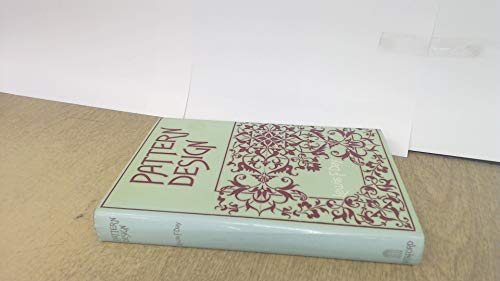Pattern Design: A Book for Students, Treating in a Practical Way of the Anatomy, Planning and Evolution of Repeated Ornament - Hardcover
Book 103 of 141: Dover Art Instruction
Synopsis
Reprint of 1903 edition. A reference work on pattern design and techniques by a member of the Arts and Crafts Movement. Focuses on textiles. Prefaces to 1903 and 1979 editions. 252 black and white line drawings and 8 photographs. Table of contents and index. xii, 286 pages. paper-covered boards, dust jacket.. 8vo.
"synopsis" may belong to another edition of this title.
From the Back Cover
Take any form you choose and repeat it at regular intervals, and, just as repetitive sounds produce rhythm or cadence, you have pattern. However, the use of pattern in design is no haphazard matter, but a disciplined activity in which the artists must impose a pleasing order and structure on the whole to achieve an aesthetically satisfying end product.
This classic guide, revised and expanded by Amor Fenn three decades after its publication, teaches artists to do just that. Surveying a multitude of applications, from architectural detail to decorative textile printing and typographic patterns, Day provides insight into the geometric foundations of all repeating patterns, and treats in a practical way the anatomy, planning, and evolution of repeated ornament. He demonstrates the extent to which pattern is the essence of the ornamental arts, and offers a wealth of technical information for the student and designer.
Generously illustrated with more than 270 designs ranging from old Japanese, Persian, and Arabian patterns to early 20th-century motifs, Pattern Design will stimulate the imaginations and advance the skills of novices and experts alike.
"About this title" may belong to another edition of this title.
Other Popular Editions of the Same Title
Search results for Pattern Design: A Book for Students, Treating in a...
Pattern Design : A Book for Students Treating in a Practical Way of the Anatomy, Planning and Evolution of Repeated Ornament
Seller: Better World Books Ltd, Dunfermline, United Kingdom
Condition: Very Good. New. Ships from the UK. Used book that is in excellent condition. May show signs of wear or have minor defects. Seller Inventory # 50029757-20
Buy Used
Quantity: 1 available
Pattern Design : A Book for Students Treating in a Practical Way of the Anatomy, Planning and Evolution of Repeated Ornament
Seller: Better World Books, Mishawaka, IN, U.S.A.
Condition: Good. New. Used book that is in clean, average condition without any missing pages. Seller Inventory # 15300704-6

